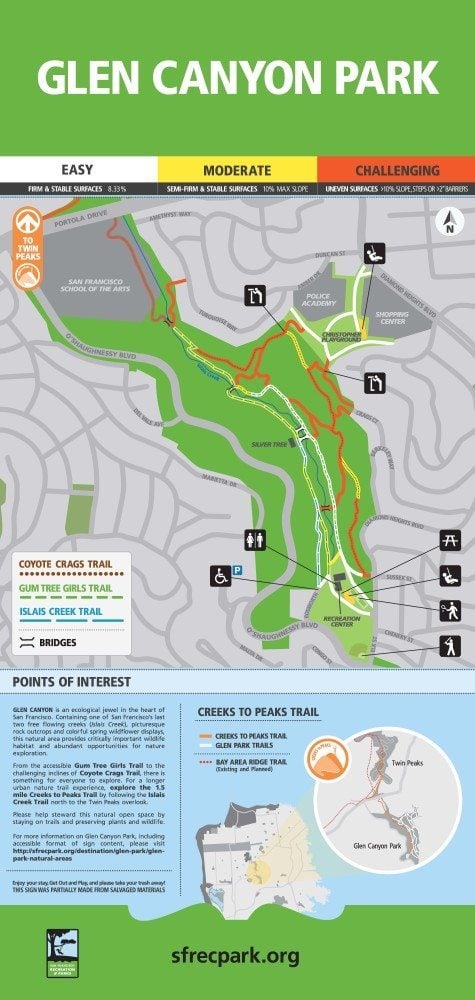Glen Canyon Park: Birding Hotspot
By Dominik Mosur
During the most significant drought in California in a millennium, a trickle of water continues to wind its way down Glen Canyon, nestled between the Glen Park, Diamond Heights, and Miraloma neighborhoods of south central San Francisco. These headwaters of Islais Creek — thought to be the largest creek in pre-settlement San Francisco — eventually empty into the Bay below Highway 280. It is some of the last and most extensive riparian habitat remaining in the City.
Riparian habitats — those along rivers, streams and other water courses — are scarce in San Francisco. Virtually all the creeks and streams once weaving their way down the hills and through the canyons on which the City was built have long been subjugated to human will through underground channelization. The only other free-flowing creek in San Francisco, Lobos Creek in the southwest corner of the Presidio, is mostly fenced off from public access.
With year-round water and high-quality habitat, Glen Canyon remains a prime spot to seek out locally-scarce riparian nesters and the gleaner flocks that also favor this location during migration and winter.

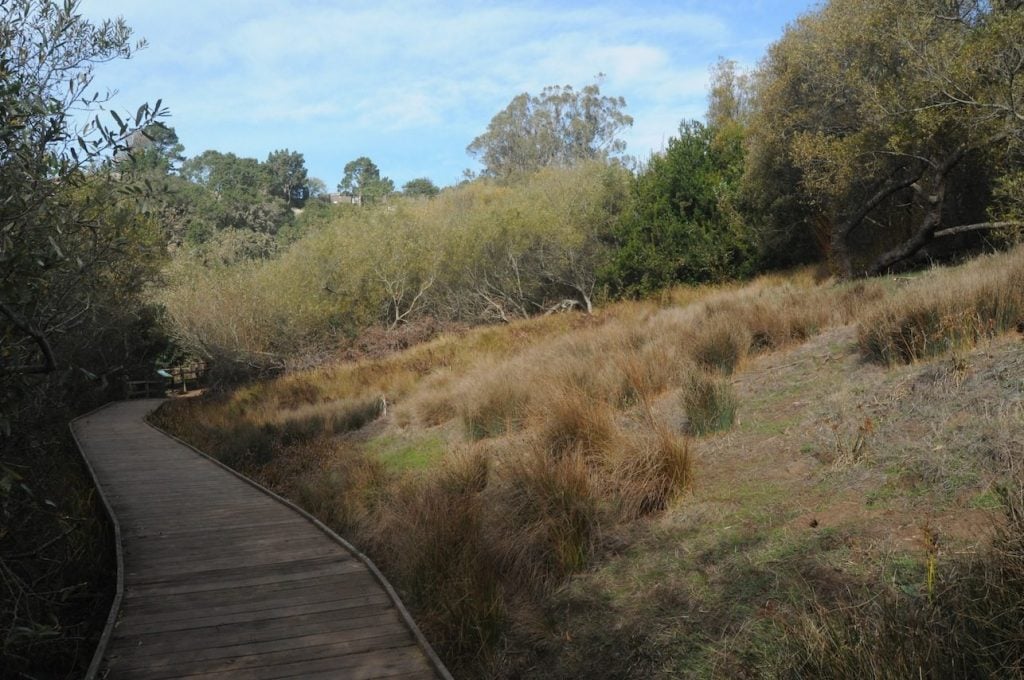
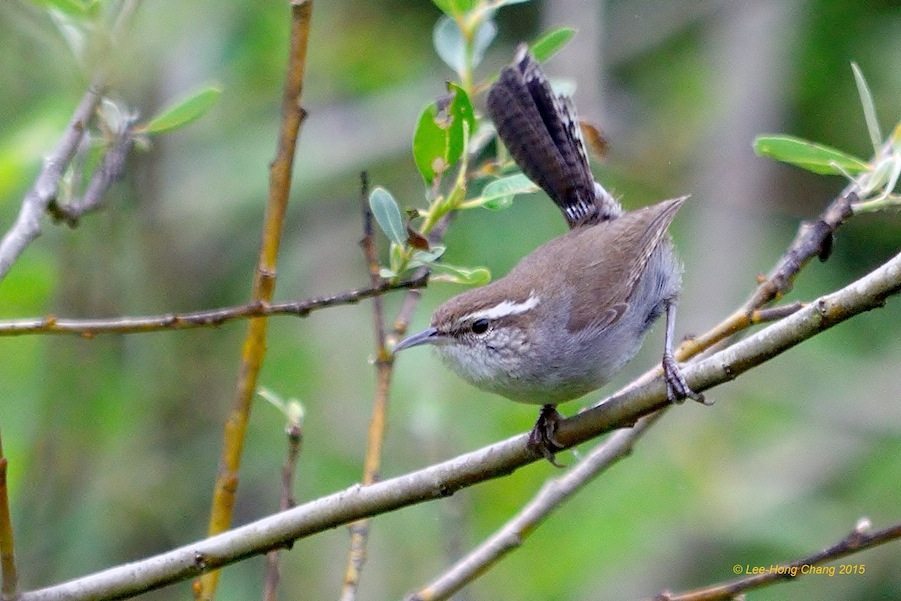
The steeper, upper section of the canyon where willows mix with scrub offers a unique plant community blend, where one can encounter locally rare resident Wrentit and Bewick’s Wren. In sum, close to 30 species of birds can be expected to at least attempt nesting in Glen Canyon each spring and summer, depending on the conditions.
In the past decade, under the management of San Francisco Recreation and Parks Department’s Natural Areas Program, restoration efforts along the creek have improved the habitat resulting in nesting success by Pacific-slope Flycatcher and probable nesting attempts by Swainson’s Thrush and Bullock’s Oriole. All three of these species are medium- to long-range migrants that spend their winters in the tropics.
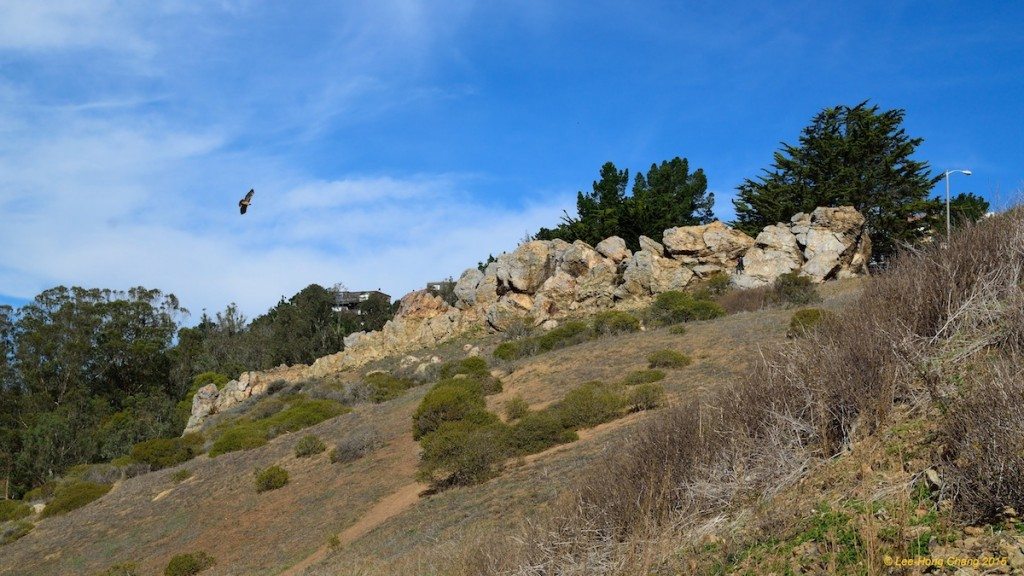
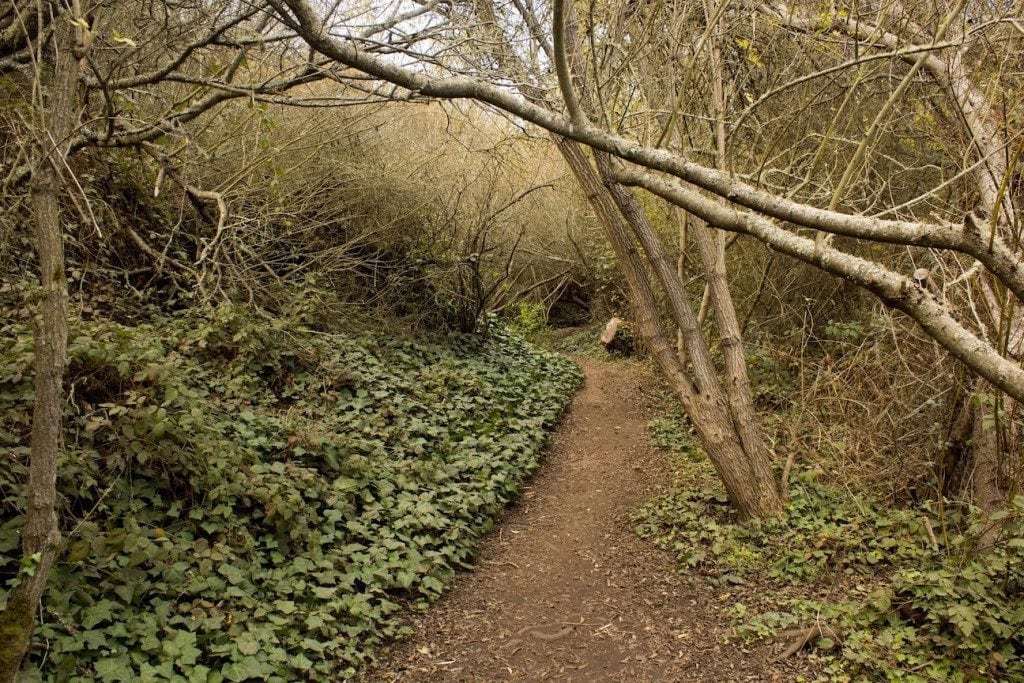
For seekers of rarities, the canyon over the years has hosted unusual migrants like Red-eyed Vireo, Rock Wren, Black-and-white-Warbler, American Redstart, Northern Parula, Indigo Bunting, Summer Tanager, Rose-breasted Grosbeak among others.
Additionally, the canyon is home to some of the longest continuous resident Great Horned Owls and coyotes in San Francisco. These subsist in part on the introduced Eurasian brown rats that abound in the City, but their diet is also bolstered by meadow voles, a keystone rodent species that can be observed throughout the park.

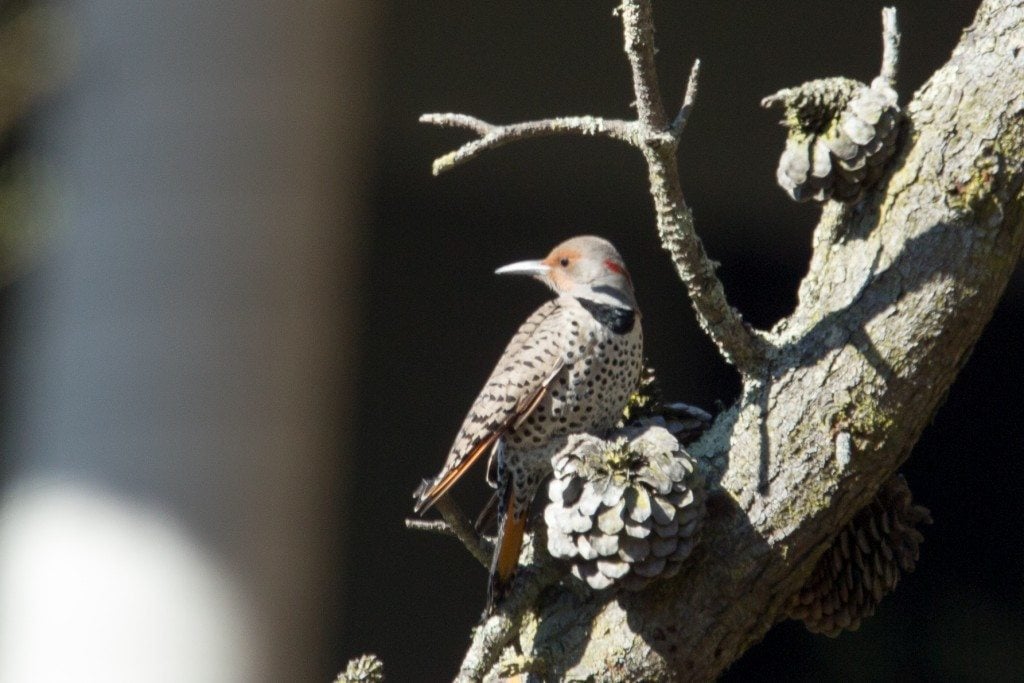
Other locally rare plants and animals that may spark the interest of birdwatchers expanding their biological horizons include: Columbine and Seep Monkey Flower, which grow in restored areas near the boardwalk, Terrestrial Garter Snakes, Northern Alligator Lizards, Arboreal Salamanders, and one of the largest population of Vivid Dancer damselflies within city limits.
The park can be accessed from the west side via trailheads at the end of Bosworth Street and along O’Shaughnessy, from Elk Street on the back side of Glen Park and residential streets along the east ridge, Crags Court and Turquoise Street.
Crags Court, which has extensive street plantings of bottlebrush and ends at a Community Garden, is worth checking for the presence of unusual migrants and wintering birds. The same goes for Christopher Playground, which is just to the north behind the Diamond Heights Safeway shopping center during fall 2015 produced some of the more expected rarities like Palm Warbler and White-throated Sparrow.
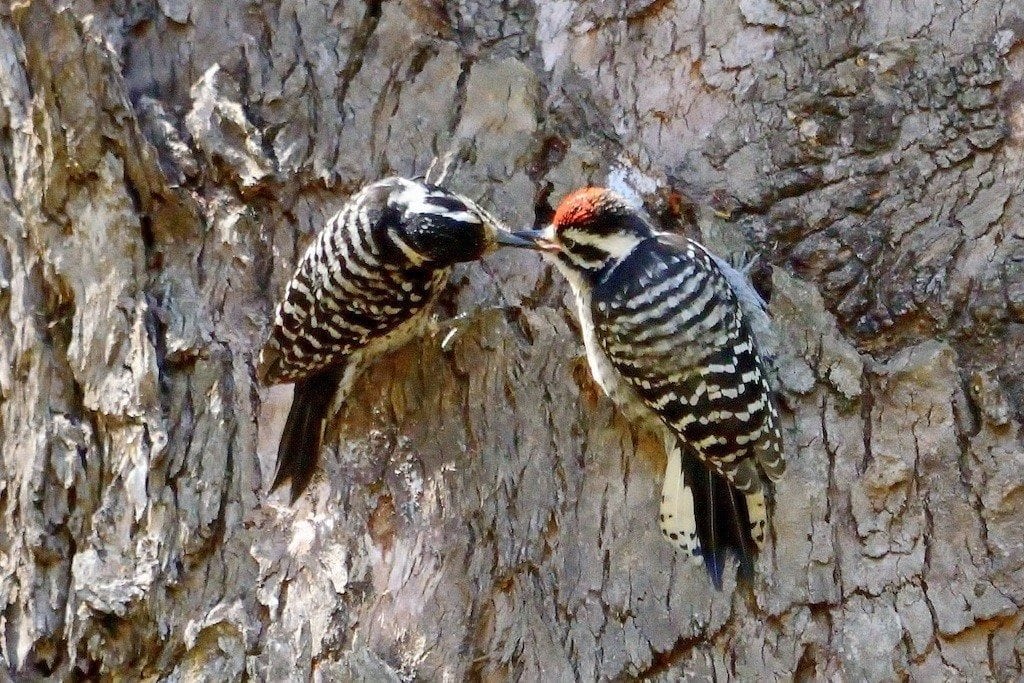
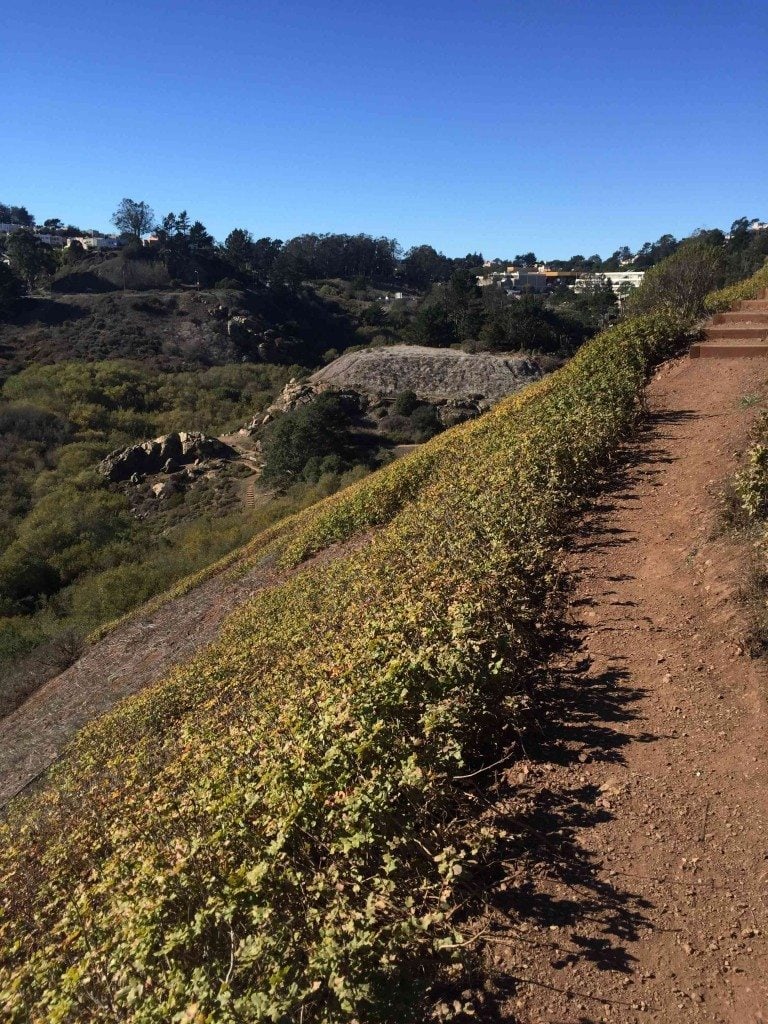
Fast Facts
Location: Between Glen Park/Miraloma/Diamond Heights neighborhoods in San Francisco. Main entrance at 70 Elk Street near Glen Park Recreation Center.
Hours/fees: 6 a.m. – 10 p.m. (standard city park hours). No fees.
Dogs: Allowed on leash. Because of resident coyotes, owners of small pets may want to avoid bringing them after dark.
Habitat: riparian, riparian-scrub, coastal scrub, grassland, exotic plantation (euke/conifer).
Key Birds:
Year round: Red-tailed Hawk, Red-shouldered Hawk, Mourning Dove, Downy Woodpecker, Nuttall’s Woodpecker, Hairy Woodpecker, Anna’s Hummingbird, Great Horned Owl, Hutton’s Vireo, Black Phoebe, Western Scrub Jay, Common Raven, American Crow, Pygmy Nuthatch, Bewick’s Wren, Pacific Wren, Wrentit, Chestnut-backed Chickadee, Bushtit, American Robin, California Towhee, Song Sparrow, Nuttall’s White-crowned Sparrow, Dark-eyed Junco, Lesser Goldfinch, Purple Finch, House Finch, House Sparrow
Summer: Band-tailed Pigeon (present but breeding unconfirmed), Allen’s Hummingbird, Pacific-slope Flycatcher, Swainson’s Thrush (present but breeding unconfirmed), Orange-crowned Warbler, Wilson’s Warbler, Bullock’s Oriole (formerly attempted nesting but scarce in past few years), Hooded Oriole
Winter: Red-breasted Sapsucker, Northern Flicker, Say’s Phoebe, House Wren, Cedar Waxwing, Hermit Thrush, Orange-crowned Warbler, Townsend’s Warbler, Yellow-rumped Warbler, Fox Sparrow, Golden-crowned Sparrow
Spring/fall migrants: Willow Flycatcher, Warbling Vireo, Cassin’s Vireo, Blue-gray Gnatcatcher, Black-throated Gray Warbler, Lazuli Bunting, Black-headed Grosbeak, Western Tanager
Ease of access: Main trail from Elk Street past the rec center to the boardwalk is wheelchair accessible. Some of the side trails, especially on the east ridge, can be very steep/rugged especially after rain.
Special features: Glen Canyon is mentioned in several state/regional guides as a good urban rock climbing location (esp. free climbing-bouldering).
Getting there: Transit: >10 minute walk from Glen Park BART station. The 44 O’Shaughnessy bus stops nearby at Bosworth.
Nearby services: Restroom at rec center is usually open from 8 a.m. to dusk.
Restaurants/cafes: Many cafes and eateries in Glen Park Village, next to the BART station.
For more information: SF Recreation and Parks web site.
Click here for more reviews of Birding Hotspots by Golden Gate Bird Alliance members.
—————————————————–
